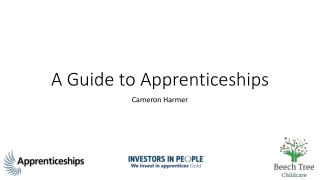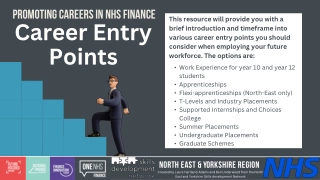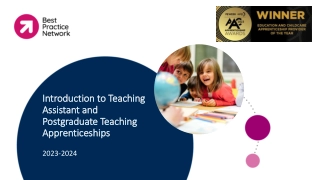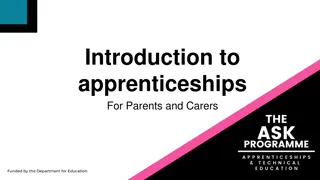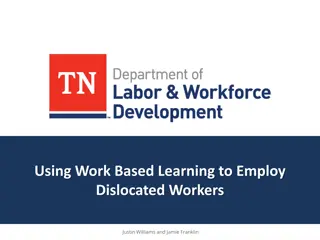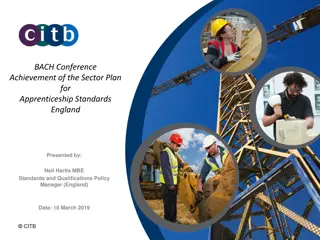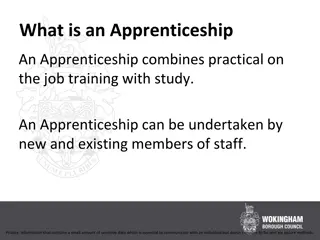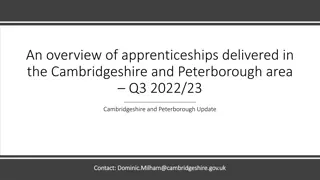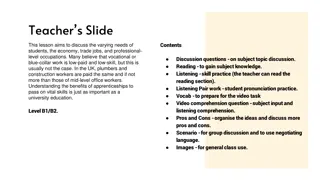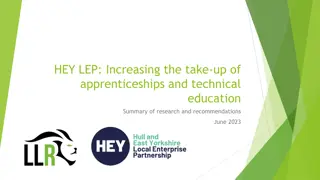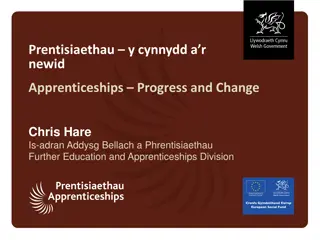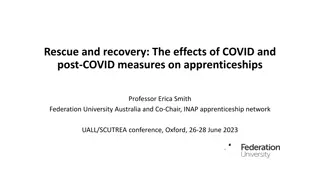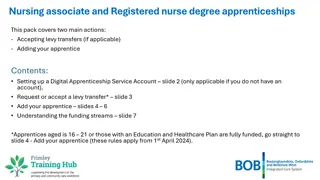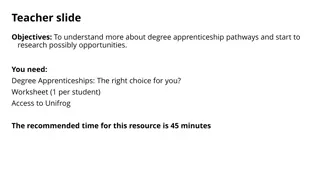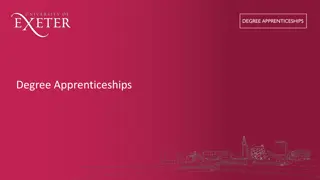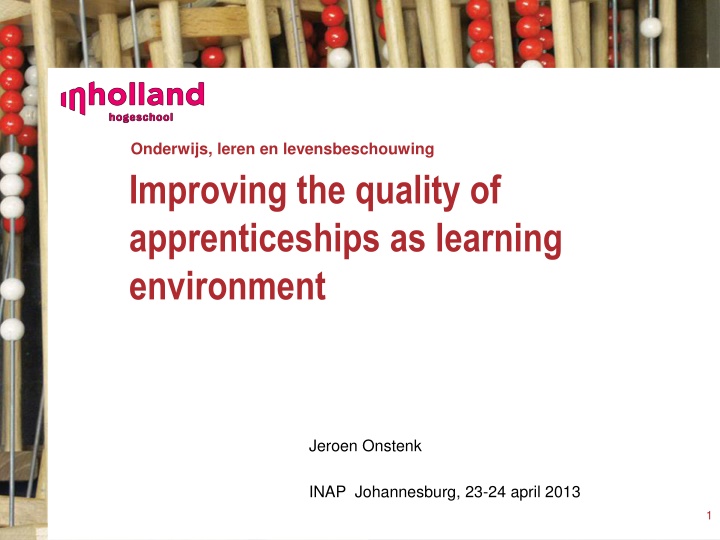
Improving Apprenticeships through Hybrid Learning Environments
Enhance the quality of apprenticeships by designing hybrid work-based learning environments. This includes strategies to improve guidance, assessment, and knowledge intensity for better outcomes. Explore the Dutch VET system and design principles for effective vocational practice. Implement powerful learning environments to develop competency and self-efficacy in students.
Download Presentation

Please find below an Image/Link to download the presentation.
The content on the website is provided AS IS for your information and personal use only. It may not be sold, licensed, or shared on other websites without obtaining consent from the author. If you encounter any issues during the download, it is possible that the publisher has removed the file from their server.
You are allowed to download the files provided on this website for personal or commercial use, subject to the condition that they are used lawfully. All files are the property of their respective owners.
The content on the website is provided AS IS for your information and personal use only. It may not be sold, licensed, or shared on other websites without obtaining consent from the author.
E N D
Presentation Transcript
Onderwijs, leren en levensbeschouwing Improving the quality of apprenticeships as learning environment Jeroen Onstenk INAP Johannesburg, 23-24 april 2013 1
Content 1. Design of hybrid wbl learning environments 2. Learning departments 3. Improving guidance and assessment 4. Develop knowledge intensity 5. Conclusions 2
Dutch VET system Secondary (general) education vmbo (Prevoc)(Five levels/tracks); 4 years (2y gen.; 2y voc) age12 -16 Secondary vocational education (mbo) 4 levels ; 1 to 4 years; age 16/17 20/21 (mainly adults in apprenticeship) School based (with extended practical learning) or Apprenticeship (with one/two day school) Secondary general education (havo/vwo) higher (pre-HVE): 5 years (age 12 17) pre-scientific (university): 6 years (age 12 18) Higher Vocational/professional Education (University of applied sciences) 2 (Ass. Degree) or 4 (Bachelor) years (age: 17 onwards)
Hybrid WBL: integrated practice centres Hybrid work learning settings concept based on several ideas and guidelines for WPL and cooperation between school and workplace from the literature, e.g: Bridging gap theory-practice by having school teachers visit workplace for lessons and guidance Students frequently reflect on their learning also related to theory; feedback by workplace mentors Guidance adjusted to students specific motivation and cognitive level Co-makership school-companies; school in the lead
Design principles 1: Content Relevant for and representative of vocational practice Up-to-date and context rich Real complete products / results Real interests customer Complexity of tasks (qualification level) ill-defined Opportunities for cooperation Opportunities for reflection Crossing the vocational borders
Design 2: Powerful learning environment Complete and rich; Inviting (affording) activity Realistic focus on content and situation Transfer oriented (horizontal; vertical) Multiple solutions possible Guidance Models Coaching Growing self-steering Developing sense of competency and self-efficacy Closely related teaching
Model hybrid WBL Focus on student/participant Quality of (hybrid) work learning situations: content; guidance Organisation and conditions for creating hybrid work learning sites Co-makership (regional companies)
The learning department Work placement involving a group of 6-8 apprentices within a single ward, where students run the ward (under guidance). Apprentices engage in collaborative learning, involving all aspects (both subject knowledge and work process knowledge) of the tasks in the department. A part of theoretical teaching is done on the job rather than in school. As teachers and coaches work together there can at last in principle- be more alignment in designing developmental tasks than in regular apprenticeships 8
Improvement of guidance and assessment Development of assessment of workplace learning is lagging behind School and professional practice cooperate to design good assessment methods Teachers from school participate in practice assessment, together with a workplace assessor Health care institutions and the regional college work together to guarantee the quality of assessors. Because of the complex role of the assessor, an assessor should at least have two years of work experience. 9
Knowledge intensity of wbl Can nurse apprentices enhance theoretical knowledge and link that to observations in the professional practice so that develop integrated professional knowledge. Pupils should be encouraged in instruction situations to give meaning to work experiences, for example, by means of reflection allowing the ' new ' knowledge to connect to the already existing knowledge It is a task of the trainers to help students in the professional situation to develop (implicit) knowledge from experiences from professional practice but also in learning the content and scope of (scientific) knowledge relevant in nursing, using sources of theoretical knowledge widely available in the hospital. Design instructional processes in sub-processes and integrative learning situations. 10
Conclusions The quality of (hybrid) work learning settings can be improved in several ways Access Content (Growing number; weaker/ seeking students; Alternation; Preparation Realistic tasks; Complexity? Knowledge Guidance Assessment Aligning judgments Connection to theory: using and connecting knowledge sources from school and work Planning; feedback; tailor made; delayed time ; integrated learning process School- work
Thank you! jeroen.onstenk@inholland.nl 12

